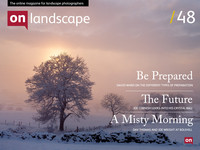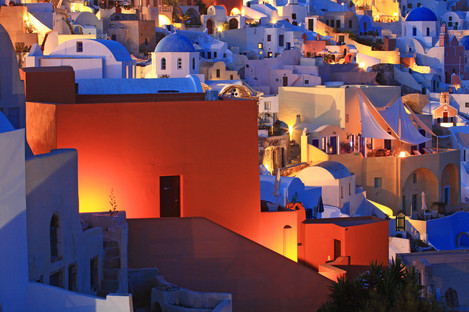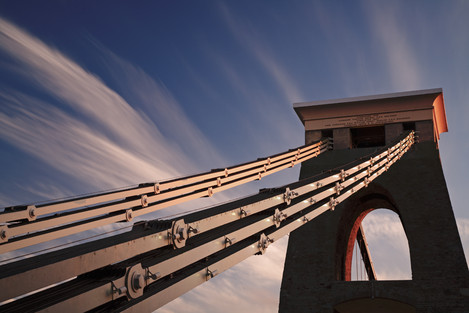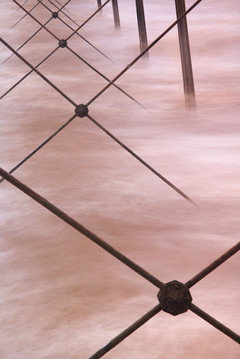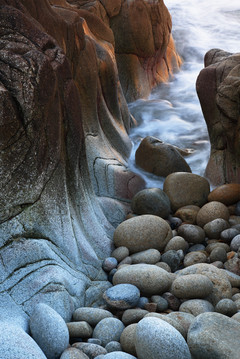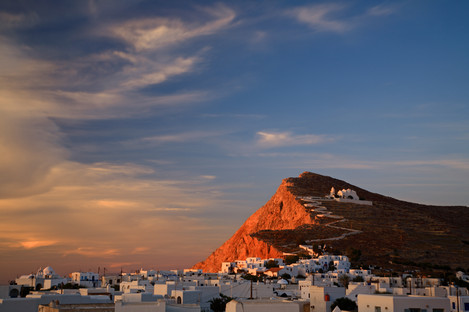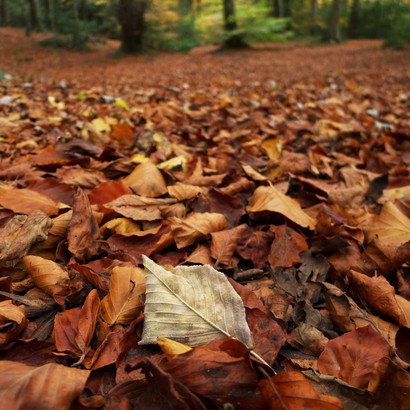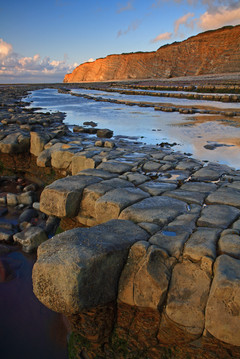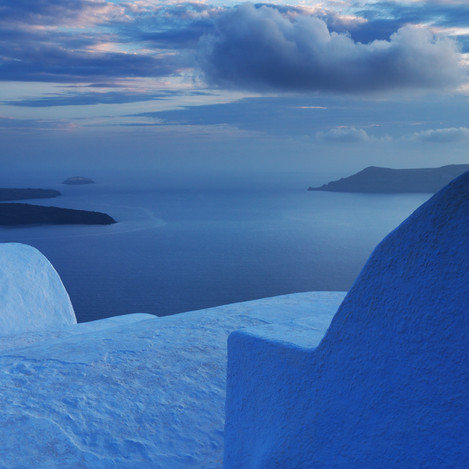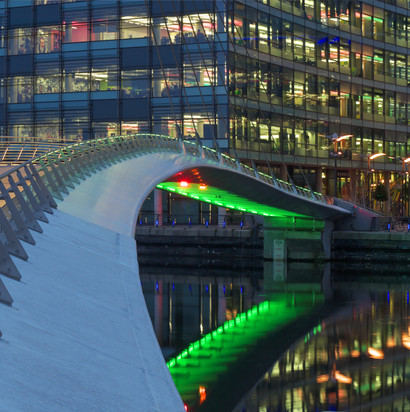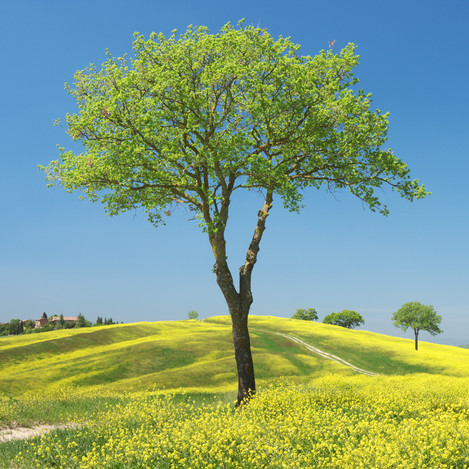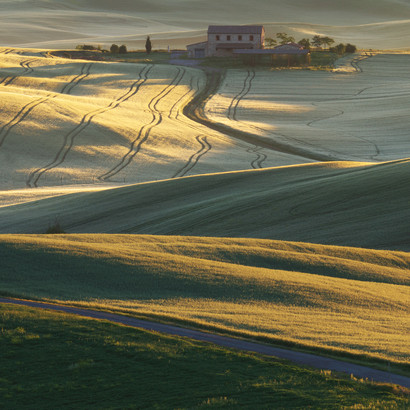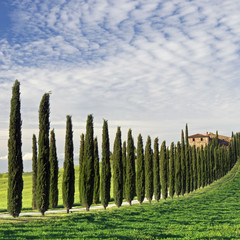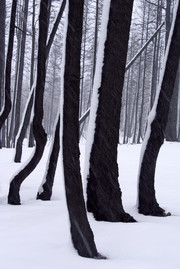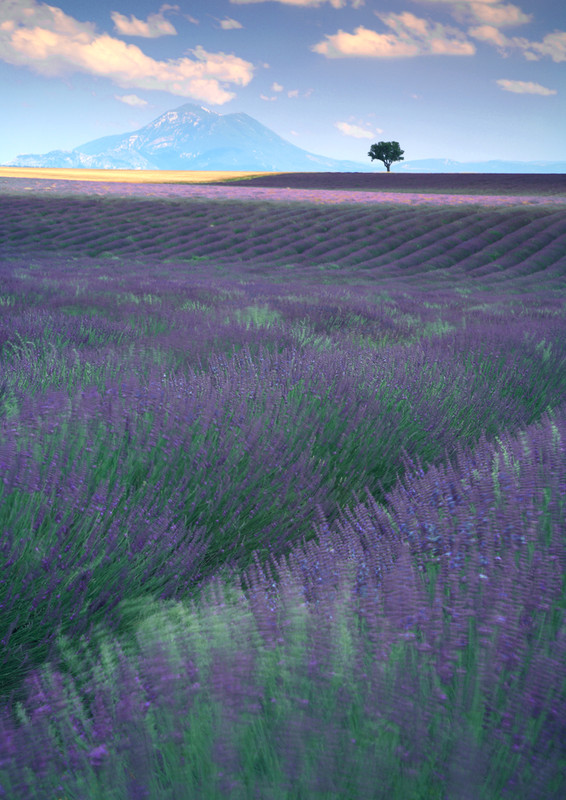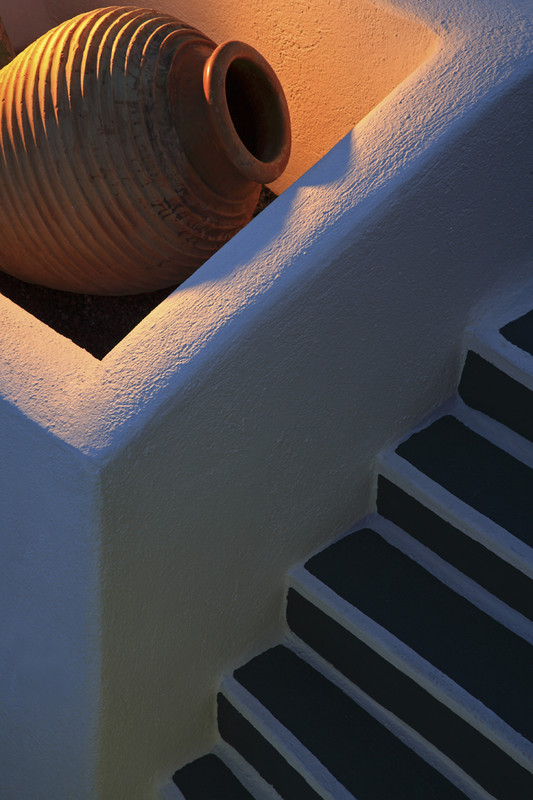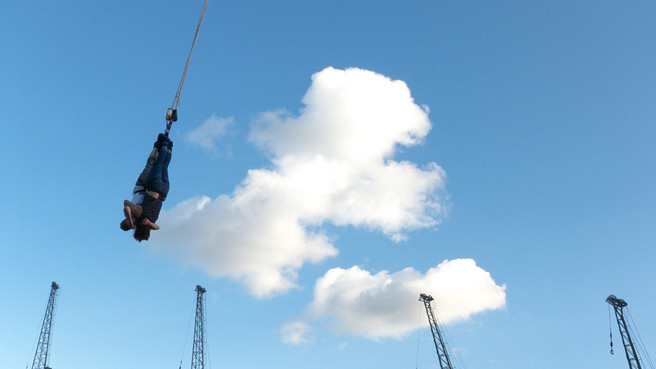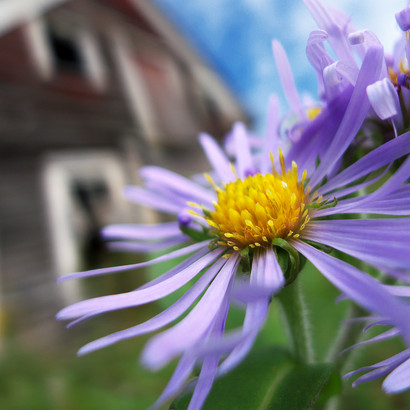Featured Photographer

Tim Parkin
Amateur Photographer who plays with big cameras and film when in between digital photographs.
Clive Minnitt
Nottinghamshire based photographer and workshop leader.
We're featuring a photographer that many people know as part of a great double act with Phil Malpas. We've interviewed Phil in a previous issue and he's shown just what a great photographer he is and we now feature Clive Minnitt to show just how strong his images are also. Take it away Clive.
Can you tell me a little about your education, childhood passions, early exposure to photography and vocation?
I'm a Lincolnshire Yellowbelly by birth but was brought up in a small village in North Nottinghamshire. My parents ran a grocery shop which doubled up as a meeting point for all the villagers and as a result we got to know all the village gossip first-hand - not necessarily a good thing!
It might have been the reason for me wanting to hide from a very early age - the travelling salesmen used to leave boxes of all shapes and sizes, the largest of which became my earliest dens and probably inspired a continual need to play hide and seek!
At school I was sports mad and still try to keep fit although the creaking noises are telling me I should change tack.
That single call meant more than twenty years of working in my previous line of work.
There was a time when I wanted to become a sports teacher but instead I ended up studying for an HND in Business Studies at what was then known as Bristol Polytechnic. The move to Bristol turned out to be one of the best things I ever did, especially socially. Work-wise it was a backward step when I accepted the first proper job offer that came along and bodged my way through many years of IT related work.
My lack of interest twice led me to resigning from jobs to undertake much more exciting backpacking trips. The first adventure, in 1977, took me to the Far East with an overland trip home via the Khyber Pass, Kabul and many other places now off -limits. I bought a second-hand Zenit-E just before the trip and on day two the shutter speed control broke. From then on I had to guess the settings and with more luck than judgement some of my shots were acceptable. The trip was full of incident from start to finish and worthy of more time spent documenting it. I had become hooked on travelling but not photography at that stage!
In most photographers lives there are ‘epiphanic’ moments where things become clear, or new directions are formed. What were your two main moments and how did they change your photography?
In 1988 I resigned from another IT job and bought a one-way ticket to Lima in Peru. This was an open-ended trip with two several main purposes. Sadly, both my sister Jane and niece, Laura, had died and it didn't take much to realise that there should be more to life than working in a job in that I didn't enjoy. Pennies were saved, car sold and I sublet my house. I was accompanied by two friends and armed with a modest Minolta X300 and a Vivitar 28-200mm lens. My aims were to have a cracking good time, realise a few travel ambitions and, most importantly, discover what I really wanted to do with my life.
This incredible trip lasted two and a half years; one amazing experience after another. After eleven months I remember being on a boat we'd chartered locally for a week-long tour of the Galapagos Islands. We were joined by several others, one of which was a young chap who impressed me immensely. We talked for hours and I discovered he was visiting the Islands for the third time, the last two of which were funded by sales of photographs taken during previous trips. He was twenty-one at the time and already had become a successful environmentalist and photographer. He suggested I should try my hand at photography.
Wow, my eyes had been opened and for the rest of the trip I made a conscious effort to improve my own photographic skills. When I left home I'd stuffed any spare space in my rucksack with rolls of Kodachrome 200 ASA process pre-paid transparency film as well as having fresh stock brought out by the friends who flew out to join in the fun from time to time. 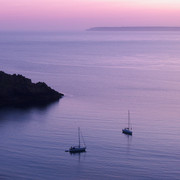 Every so often I would send a batch of bright yellow packets from tin-pot little post offices based in some of the strangest South American places imaginable to the Kodak lab in Hemel Hempstead and include a forwarding address of my parents home. Incredibly, every one of the packages reached home and unspoilt by X-rays. During the whole trip this amounted to 250 rolls of said film and not one went missing. It may sound a lot but it amounted to just one roll per week!
Every so often I would send a batch of bright yellow packets from tin-pot little post offices based in some of the strangest South American places imaginable to the Kodak lab in Hemel Hempstead and include a forwarding address of my parents home. Incredibly, every one of the packages reached home and unspoilt by X-rays. During the whole trip this amounted to 250 rolls of said film and not one went missing. It may sound a lot but it amounted to just one roll per week!
My parents regularly wrote to me via Post Restante which was the best method available at the time. Collecting mail from relatives and friends at pre-determined post offices was like Christmas only on a much more regular basis. I was chuffed to bits when reading that my photographs were "excellent". That was it then, I was going to be a photographer when I eventually returned home.
WRONG! Fast forward eighteen months. Opening the slide boxes was far more nerve-wracking than waiting for exam results. Imagine my huge disappointment when I found many of them were not of the standard I had hoped for. Not technically disastrous but pretty bland and uninteresting. Like me, my parents had no prior knowledge of what made a good image and they were simply pleased I was apparently having a great time.
I re-joined the same company I'd left - a job was a job after all - but technology had moved on and I hadn't. My passion for photography was growing and I spent a lot of my spare time teaching myself to improve my skills. A huge stroke of luck came my way when 6 weeks after entering one of my South American images into a travel photographic competition (organised by VENUE, a Bristol listings magazine) the editor phoned me to tell me I'd won first prize. I caused a bit of a stir in the open plan office when I stood on my chair, flung papers in the air and shouted "I'm outa here!" There were green faces everywhere!
My prize was two return flights to Sydney in Australia and gave me the confidence boost I needed to resign yet again and pursue my goal of becoming a photographer. Day one was incredibly scary but that was almost sixteen years ago. It's hard to believe that I'm still enjoying what has become more a way of life than a job.
What has been your biggest achievement in photography?
In years gone by I would have probably said to make my living out of doing something about which I'm both passionate and thoroughly enjoy. More recently I've thought much more about this and feel that it's a huge bonus to be able to use my photography in order to help others, either knowingly or otherwise. .
In the same way that I've been (and still am) inspired by the work of many outstanding photographers it's very rewarding whenever I hear that my own photography has had a positive effect on others less fortunate.
One memorable and extremely moving anonymous phone call rendered me speechless when the caller said his terminally ill wife had just received one of my hand-made greetings cards, sent by one of her friends, showing an image I'd made in Andalucía. It showed a wildflower meadow; vivid colours against a blue sky - a scene which was almost too good to be true! He said, "You don't know me but I just wanted to say a huge 'thank you' for the uplifting effect your photograph has had on my wife. I can't thank you enough."
That single call meant more than twenty years of working in my previous line of work.
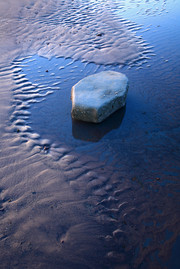 Could you tell us a little about the cameras and lenses you typically take on a trip and how they affect your photography.
Could you tell us a little about the cameras and lenses you typically take on a trip and how they affect your photography.
I'm in awe of the large format photographers who are totally dedicated to their craft and produce stunningly beautiful large prints. When watching them at work I can't help but feel a tad envious and occasionally crave my own 5 x 4 camera. They are a work of art in themselves but not really suited to my style of work..
I'm able to work better when freed up of weight and bulk. For years I enjoyed using Canon gear (EOS1 & EOS5D mk1) with a range of excellent 'L' series lenses but eventually found the weight to be a problem. However, there was another frustration lingering in the background and I couldn't put my finger on it. Eventually it dawned on me when talking with my good friend and fellow Light & Land tour leader, Phil Malpas, that I was struggling with using the standard 35mm 3 x 2 format.
Time after time I was seeing images in different formats. At the time Phil had just added the Panasonic Lumix GF1 to his considerable armoury and suggested I try it. I was hooked immediately knowing that it would not only give me the scope to photograph using different formats it would also be a much lighter load to carry. I'm like a kid with a new toy with 4:3, 3:2, 16:9 & 1:1 formats at my fingertips.
I use two GF1 bodies, four lenses (7-14, 14-45, 45-200 & 100-300mm although the half-size sensor means that the effective focal length is double these) and the total weight of my camera bag (including the RF75 filter system) is little over 4kgs. This means far less aggravation at airline check-in desks and also I'm now far more productive with my photography, particularly near my home in Bristol. Cycling to find new locations is no longer a problem with full gear & tripod firmly strapped on!
I also carry around a Panasonic Lumix LX5 compact camera. It has an excellent macro facility and is great for taking shots on the hoof. Primarily, I use it for capturing images in Bristol and send them to my local rag, the POST, for their reader 'Picture of the Day' series. It's a great way of keeping my eye in and keeping my work in the local public domain. Sadly it's unpaid!
Tell me about the photographers that inspire you most. What books stimulated your interest in photography and who drove you forward, directly or indirectly, as you developed?
In 1982, long before I had any real interest in photography I had two month off following an operation arm due to a hockey injury. Not wishing to sit at home and watch TV I walked the Cornish Coast path to help raise funds for a hospital. Before I left I came across an excellent book called 'The National Trust Book of Long Walks.' It was written by Adam Nicholson, photography by Charlie Waite. It was the first time I had seen photography that I felt was truly art. I still treasure the book.
Charlie's name stuck with me and years later, when I had made my decision to quit the corporate rat race, an advert in a photo magazine caught my eye. A company called Light & Land were advertising photographic holidays led by the same Charlie Waite. I was hooked. Any spare cash I had was used to sign up to Light & Land tours to Venice, Andalucía, Vermont, Tuscany and South Africa. Travel AND photography - could it get any better than this?
I met Phil Malpas on the Andalucía trip and we subsequently teamed up on various tours having a common interest and similar passion for our subject. As with Phil, Charlie's book 'The Making of Landscape Photographs' had a profound effect on me too. I would study it hour after hour, analysing what it was that made the photographs stand out from the rest. It definitely helped to improve my own photography.
A third book that inspired me to push myself was Phil's 'Capturing Colour'. It is technically brilliant but more than that it was the first book that either of us had written and it inspired me to push myself out of my comfort zone. If he can do it....! My first book, 'Clevedon Pier' was published a year later.
I'm also very impressed with the outstanding images of underwater photographer, David Dubilet, and the wonderfully minimalistic approach of Michael Kenna. They are equally inspiring.
How do you generate income from your photography?
From day one I decided not to have all my eggs in one basket. Initially, I sold prints and card via the craft fair route. When I started it was quite profitable but tailed off after a few years. Part of the fun of craft fairs was listening to some of the questions asked by the visiting public:-
"Have you taken all these photographs yourself?"
"Yes, I have."
"So have you been to all these places then?"
Nuff said!
I also took on board a number of very enjoyable architectural commissions for clients who encouraged me to be much more artistic with my compositions than I had expected. This taught me a great deal about how it isn't always vital to have true vertical and horizontal lines. It depends on the client's needs.
I'm reminded of my first ever architectural commission. At the time I was in full-time employment at a life assurance company and photography was merely a hobby. The company was having new headquarters built on the outskirts of Bristol and there was a general reluctance on the part of staff to work away from the more convenient city centre offices.
Although the company had a full-time photographer at the time I can only think they needed a fresh approach. I was chuffed to bits to be asked by the marketing department to produce a portfolio of images of the new buildings and landscaped gardens which would hopefully seduce the staff into moving. I hadn't actually visited the site at that stage but didn't think it would be that large a task and would probably take a day, possibly two, to complete. How naive!
Bearing in mind this was my first paid commission I had no idea what fee to quote - it was a finger in the air job. I came up with a figure that I thought I would be happy with but felt uneasy when department accepted my quotation rather too readily. My heart sank when I arrived at the site for the first time. I knew instantly that I had underestimated how much work was involved.
Not to be deterred I used the experience as part of the steep learning curve I was going to have to climb if I was to follow my plan to change 'career' and take up photography full-time.
The project was a dream for me. I am fascinated with architecture and love landscapes. The perfect combination. I became totally engrossed and spent five very enjoyable days in my spare time producing what I felt was the best work I done to date.
When the time came to hand over the sheets of transparencies to the marketing executive it was a nerve-wracking moment. What would he think? It seemed an age for his mouth to open and comment. Finally, he said:-
I don't what came over me but I couldn't stop the words coming out of my mouth.
"In that case would you mind if I doubled my fee?" And waited for his response.
"Not at all", he said. We shook hands warmly and I just beamed!
To this day I'm still convinced the department had a MUCH larger budget but, hey-ho, we were both happy.
I also give illustrated lectures around the UK which are liberally sprinkled with amusing anecdotes. I seem to be incident prone and have a wealth of ammunition to get my teeth into.
My hand-made greetings sell well locally and are a good way of marketing my work. Through them have come commissions, print sales and image licensing fees. The most unusual request was to train a room full of Estate Agents to take better photographs of properties on their books.
Another income stream is derived from book sales. I've been very fortunate in that my self-publishing exploits have paid off so far. It's a big gamble and vital to have the marketing channels sorted before taking the plunge. I'm sure that I'm not alone in wanting to see my favourite images selling in book form on the shelves of major stores but a themed approach is more likely to achieve success. Thankfully, 'Clevedon Pier'. 'Finding the Picture', 'The Isle of Sark', 'The Gorrillas have landed' have all performed better than I dared hope and my latest offering, 'Bristol Hot Air Balloons', has only just been published. Fingers crossed!
Last but not least, as I mentioned earlier, I'm privileged to lead tours for Light & Land. Working with my good friend Phil Malpas we spend about two months each year at exciting locations in the UK and abroad. Our working styles are quite different but complement each other well. Our successful working partnership also led to a joint collaboration with Outdoor Photography magazine for the last five years during which we took readers to some great locations and wrote critiques of the resulting images.
Lavender, Valensole Plateau, Provence, France: This was an exercise in waiting for the magical moment, keeping fingers crossed that it would actually happen. When there are so many different things going on in front of you, it is easy to get confused and miss the picture altogether. Studying this image makes me realise how many decisions
I had to make regarding composition, never mind metering the light. Proportion of sky to land? Placing of the tree and mountain? What angle to have the rows of lavender? Can I get the clouds and
lavender to form a relationship? Do the clouds sit comfortably with the mountain? When will the clouds be in the optimum position? If I wait any longer might it get even better? What lens should I use? If I fire the shutter when the wind blows what will be the effect? Do I need a slower shutter speed to generate more movement? If so, how do I achieve a slower shutter speed? Do I want it all in focus or some of it?
Sometimes, no matter how much we plan, anticipate or pre-visualise the final image, it doesn’t come together. When the sun poked its head through a gap in the clouds and cast a single ray of light across the lavender field at precisely the same time as the wind gusted, it was the icing on the cake.
Greek Urn, Santorini: It's very satisfying when the final result matches the pre-visualised version. I had passed by this scene previously and felt that the scene would make for a pleasing image. However at the time it was blandly lit and a I had to work out the optimum time to revisit and give me these lighting conditions.
There are two different light sources, ambient daylight and tungsten lightning. I didn't have long to work before the tungsten light was programmed to switch off resulting in the two lovely shadows on the wall disappearing.
The Falling Pound, Bristol Floating Harbour: Do any of us ever stop looking for potential images? Whilst walking around the Bristol waterways just a week ago I stopped to watch some people bungee jumping from a very tall crane. There were a few quickly moving clouds in the background and I sensed there might a possible shot.
The couple had finished bouncing and were being lowered onto a safety mat in front of where I was standing. I worked out my composition using first the cranes and then the £ cloud. The couple eased into position perfectly. A case of being in the right place at the right time and, thankfully, I had a camera with me. The caption almost chose itself!
What would you be doing if you weren't doing photography?
Thinking about working less and spending much more time with family and friends. No doubt it would still involve travel and exploring places I’ve never been to. I still miss office banter and the wonderful camaraderie is one of the reasons I enjoy leading Light & Land tours so much.
What sorts of things do you think might challenge you in the future or do you have any photographs or styles that you want to investigate?
I’m always challenged by changes in technology. I seem to get by with the minimum knowledge required and leave the techie bits to others.
One of the most challenging tasks for any photographer is to have style of work that is instantly recognisable. I’m not sure I have one so it’s something I’d like to work on more.
Where do you see your photography going in terms of subject and style?
Although I’m a travel addict there will come a time when I’ll concentrate more on photographing Bristol and the nearby countryside & coast. Perhaps the process has already begun with the publication of two small books of local subjects during the last twelve months. Narrowing down the choice of subject definitely focuses the mind.
Who do you think we should feature as our next photographer?
Brian Clark, who lives in Fife, is a photographer whose work I like very much especially his Scottish landscapes.
- Vermont The Wonky Barn
- USA Bryce Canyon snowfall
- Tuscany Val d’Orcia hilltop house
- Tuscany Val d’Orcia dawn light
- Tuscany nr Pienza The Yellow Road
- Santorini Oia at dusk
- Santorini chapel
- Manchester Salford Quays
- Kilve North Somerset
- Glos Buckholt Wood
- Cornwall Porth Nanven
- Clevedon Pier Severn Estuary
- Bristol Clifton Suspension Bridge

